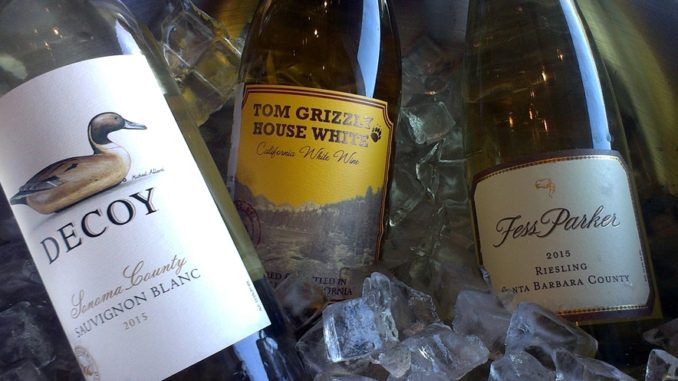
Note: Saw today’s news about China’s potential tariffs on US wines. Some context: 1) less than 4% of US wine exports went to China in 2017 (versus Japan at 6%, Canada at 22% and EU at 52%.), 2) the US sends less wine to China now than in 2011 even though the overall market for imported bottled wine more than doubled, 3) the US share of China’s wine imports has fallen from 5% to 2%. Yes, I realize the situation is more complex than mere stats, and includes the Hong Kong factor, which I address below, but those numbers do provide some perspective.
By Jim Boyce | The United States sends less wine to China now than in 2011. That seems hard to believe in a market where demand for imported wine has more than doubled during the same period. U.S.-based association The Wine Institute reported exports to China of 16.1 million liters in 2011 versus 14.2 million liters in 2017, the latter a nearly 5 percent drop from 2016.
China Customs confirms the lost ground. Its stats show the U.S. share of imported bottled wine slid from 5 percent in 2011 to 2 percent in 2017. Last year, it trailed France (40 percent), Australia (19 percent) Chile (13 percent), Spain (12 percent) and Italy (5 percent).
The bright spot was value: Customs showed U.S. wines up 44 percent in 2017. As with volume, things look less rosy in the context of 2011. And one industry insider links that value rise to fewer inexpensive U.S. wines arriving due to an erosion of relations, and eventual split this year, between U.S. mega producer Gallo and importer Nanpu. (Customs stats for Nanpu showed a sharp drop.)
By the way, while Customs reported that 44 percent rise in U.S. wine value, the Wine Institute reported the opposite, a nearly 4 percent drop! This suggests cheaper wine is in the pipeline but has not yet cleared Customs.
Anyway, it’s useful to put U.S. wines into a larger context.
First, there there is the Hong Kong factor. China ranked fourth as a destination for U.S. wines by volume in 2017, behind the European Union, Canada and Japan, with Hong Kong in fifth place. But in terms of value, Hong Kong jumped to third, behind the EU and Canada but ahead of Japan and China.
In hard numbers, Wine Institute reported exports of 9.4 million liters to Hong Kong in 2017 (versus 14.2 million for China) worth USD118.8 million (versus USD78.7 million for China). There is a serious flow of pricier U.S. wines into Hong Kong, although that is not the final destination for many of them.
“Last year alone, we imported more than 60 million litres of wine from over 50 countries and regions—a record value exceeding US$1.5 billion,” said Paul Chan, Hong Kong’s Financial Secretary, at last winter’s Hong Kong International Wine & Spirits Fair.
“That, ladies and gentlemen, is equivalent to more than 80 million bottles of wine. With a population of just about 7.3 million, we didn’t empty all the 80 million bottles ourselves—about half of the wine imported into Hong Kong was re-exported. It shouldn’t surprise anyone here that the massive market of the Mainland of China is the key destination of our wine reexports.”
If even a third of the U.S. wine entering Hong Kong is re-exported to China, a safe bet, that would raise volume above 17 million liters, slightly higher than 2016. Again, not impressive in a market that has more than doubled, but something to keep in mind.
A second factor is overall U.S. wine exports. They have declined from 446 million liters in 2011 to 380 million liters in 2017, according to the Wine Institute. China’s share of those wine exports has risen slightly from 3.6 percent to 3.8 in volume and from 4.4% to 5.1% in by value.
Still, those numbers are modest. The Canadian market for U.S. wines was about six times bigger by volume and value last year.
The story of U.S. wine in China has been modest, too, despite a wealth of potential customers, including millions of Chinese who have worked, studied or traveled in the U.S., a generally positive attitude by Chinese consumers to U.S. products, including in terms of food safety, and a stream of U.S. wine promotions, including a countrywide series of California wine master classes.
There are good reasons for that situation, involving pricing, distribution, ambition, and more. And my observation is that while consumers of U.S. wine in China tend to be relatively small in number, they also tend to be fairly knowledgeable, and that should bode well for premium wines. Anyway, I’m working on a long report about that now and will post more soon!
Follow Grape Wall on Facebook and Twitter. Sign up for the China wine newsletter below. Also check out sibling sites Beijing Boyce and World Baijiu Day.
Sign up for the Grape Wall newsletter here. Follow Grape Wall on LinkedIn, Instagram, Facebook and Twitter. And see my sibling sites World Marselan Day, World Baijiu Day and Beijing Boyce. Grape Wall has no advertisers, so if you find the content useful, please help cover the costs via PayPal, WeChat or Alipay. Contact Grape Wall via grapewallofchina (at) gmail.com.
Leave a Reply
You must be logged in to post a comment.